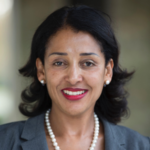In 1978 the relatively unknown Australian Ken Warby fitted his boat, the Spirit of Australia, with a military surplus Westinghouse jet engine bought at an auction, and went on to set the world water speed record reaching 511 kilometres per hour. The record has lasted for 40 years; dozens of people have died chasing their dreams – interestingly none of whom were women.
On an average there is a six years difference between life expectancy at birth between women and men in high-income countries and about a three years gap in low-income countries (link). In countries with the widest gender gaps for this critical indicator, men’s lives can be between 9 and 12 years shorter than women’s, for example in Russia, Rwanda, El Salvador, Lithuania and Vietnam (link).
Biology cannot explain all this difference.
A potent mix of biology and behaviours determines everyone’s health. These behaviours are driven, in part, by the expectations of what it means to be a man or woman in any society. These expectations set the tone for “toxic ideals of masculinity” and drive high levels of risk-taking behaviours, including use of tobacco, alcohol , violence (including against women), road traffic injuries, compared to women
And precisely because men’s exposure to and propensity for risk is often considered the ‘natural state of affairs’ rather than shaped by social determinants, gender norms as a driver of premature death and poor health outcomes among men and boys are seldom considered in global health policies and programs.
The World Health Organization’s Director General Dr Tedros Adhanom has brought together the resources of the 11 important global health agencies under one Global Action Plan to achieve the sustainable development goal related to health. Built around three strategic directions, align, accelerate and account, it provides a bold attempt at streamlining an increasingly complicated global health architecture with potential dramatic efficiency gains.
The first phase of the Plan was launched at the Berlin World Health Summit today, and the final product will be launched at next year’s UN General Assembly. This process offers an opportunity to ensure policy coherence around gender equality for global health organizations, cascaded through their programs and resource allocation with a real impact on people’s lives.
However, to do so, we need to get gender and gender equality right.
The proposed text falls in to the same trap that Global Health 50/50 an initiative that has analysed the gender policies of 140 leading global health organizations has identified. It equates gender equality with a women’s empowerment agenda, and paying scant, if any, attention to what gender means to health outcomes across the whole of society.
Empowering women to decide freely on all matters related to their health, including their sexual and reproductive health and rights, is critical. Nevertheless, global health urgently also needs to conceptually and programmatically understand gender as one of the most significant social determinants of health for everyone – women, men, boys, girls and people with non-binary identities.
Efforts to strengthen women’s empowerment and leadership in global health are critical, but are not synonymous with addressing what gender as a determinant means for the health of everyone. The narrative on gender included in the Global Action Plan would therefore do well to take its starting point in WHO’s definition of gender as ‘socially constructed characteristics of women and men—such as norms, roles and relationships of and between groups of women and men’.
This brings us to our second point, the seven ‘’accelerator’’ initiatives of the Global Health Action Plan, put in place to address crosscutting areas with potential to impact global health. Accelerators are meant to address common priorities where more than one agency has a clear interest, and where resources and expertise can be pooled.
For example, one of the Plan’s accelerators focuses on expanding meaningful community and civil society engagement in health governance. Yet, the 2018 Global Health 50/50 report showed that a majority of civil society organization focuses on health issues prioritised during the era of the MDGs, namely: maternal health, child health and infectious diseases. While this work remains critical and legitimate, we need more organizations to take on the shifting burden of disease in women, e.g. by addressing heart disease, cancer or diabetes or addressing the health needs of everyone in the population.
It is also important to consider gender as a spectrum to ensure open, transparent and inclusive processes in advocating for and prioritizing essential health services and increased health expenditure.
Finally, let us remember that only what gets measured is done. The third pillar of the Global Health Action Plan is accountability.
Global Health 50/50 found in its 2018 report that two out of three global health organizations fail to collect or report sex-dis-aggregated data. In other words, when global health organizations are delivering programs (or products), the majority of the time they don’t know if they’re reaching men or women, or boys or girls, because they don’t measure or analyse it. To achieve a healthier world for all, the minimum we can insist on is a set of measurement indicators that tell us who our policies, programs and products are reaching – and more importantly, who is being missed out.
Calls for and commitment to dis-aggregate data by sex are not unusual; and are increasingly common in global health. The Global Action Plan must go one-step further to foster accountability for gender-responsive statistics. The Plan ought to track what proportion of the 11 organization’s indicators report data dis-aggregated by sex.
Gender is among the most significant social determinants of health outcomes. Allowing boys to be boys at the expense of sound, gender-responsive global health policy is no longer an option. The Global Action Plan offers an opportunity to set things right . It is important to get gender into the global health and rights agenda in the true sense of the term.
Gender-transformative organizations provide the key to dramatic improvements towards healthy lives and well-being for all, which leaves no one behind.
About the Authors:
 Dr Senait Fisseha, Founding Director of The Centre for International Reproductive Health Training and Clinical Professor of Obstetrics and Gynaecology, University of Michigan Medical School. Her work focuses on improving women’s health and expanding access to reproductive health services. Dr Fisseha is a member of the Global Health 50/50 Advisory Council.
Dr Senait Fisseha, Founding Director of The Centre for International Reproductive Health Training and Clinical Professor of Obstetrics and Gynaecology, University of Michigan Medical School. Her work focuses on improving women’s health and expanding access to reproductive health services. Dr Fisseha is a member of the Global Health 50/50 Advisory Council.
 Mikaela Hildebrand, guides strategic directions at Global Health 50/50 and is the regional SRHR policy advisor at the Swedish International Development Cooperation Agency, Sida, based in Zambia. Her interest is getting evidence into global health policy and practice.
Mikaela Hildebrand, guides strategic directions at Global Health 50/50 and is the regional SRHR policy advisor at the Swedish International Development Cooperation Agency, Sida, based in Zambia. Her interest is getting evidence into global health policy and practice.
Competing Interests : We have read and understood BMJ policy on declaration of interests and declare no competing interests.